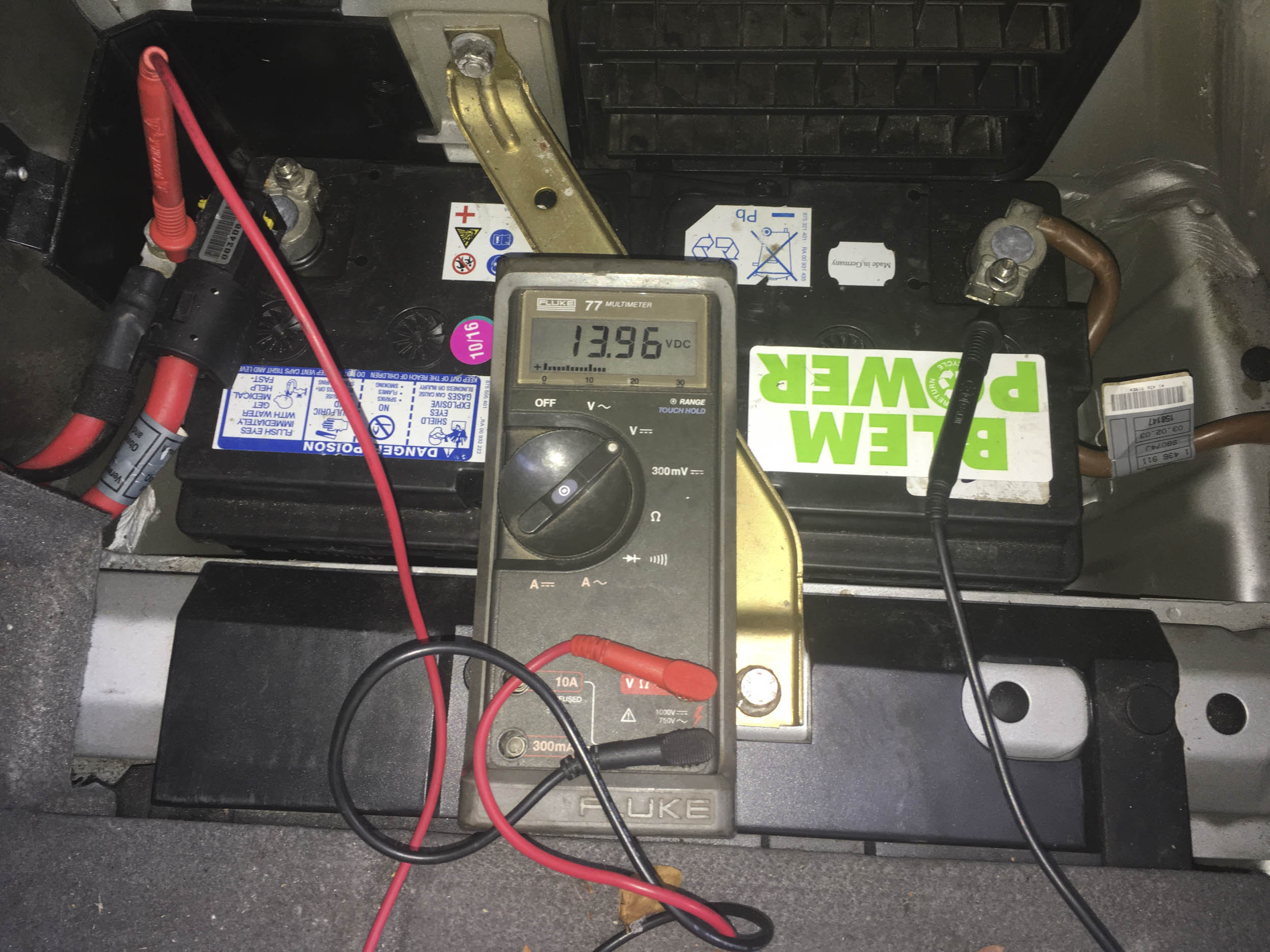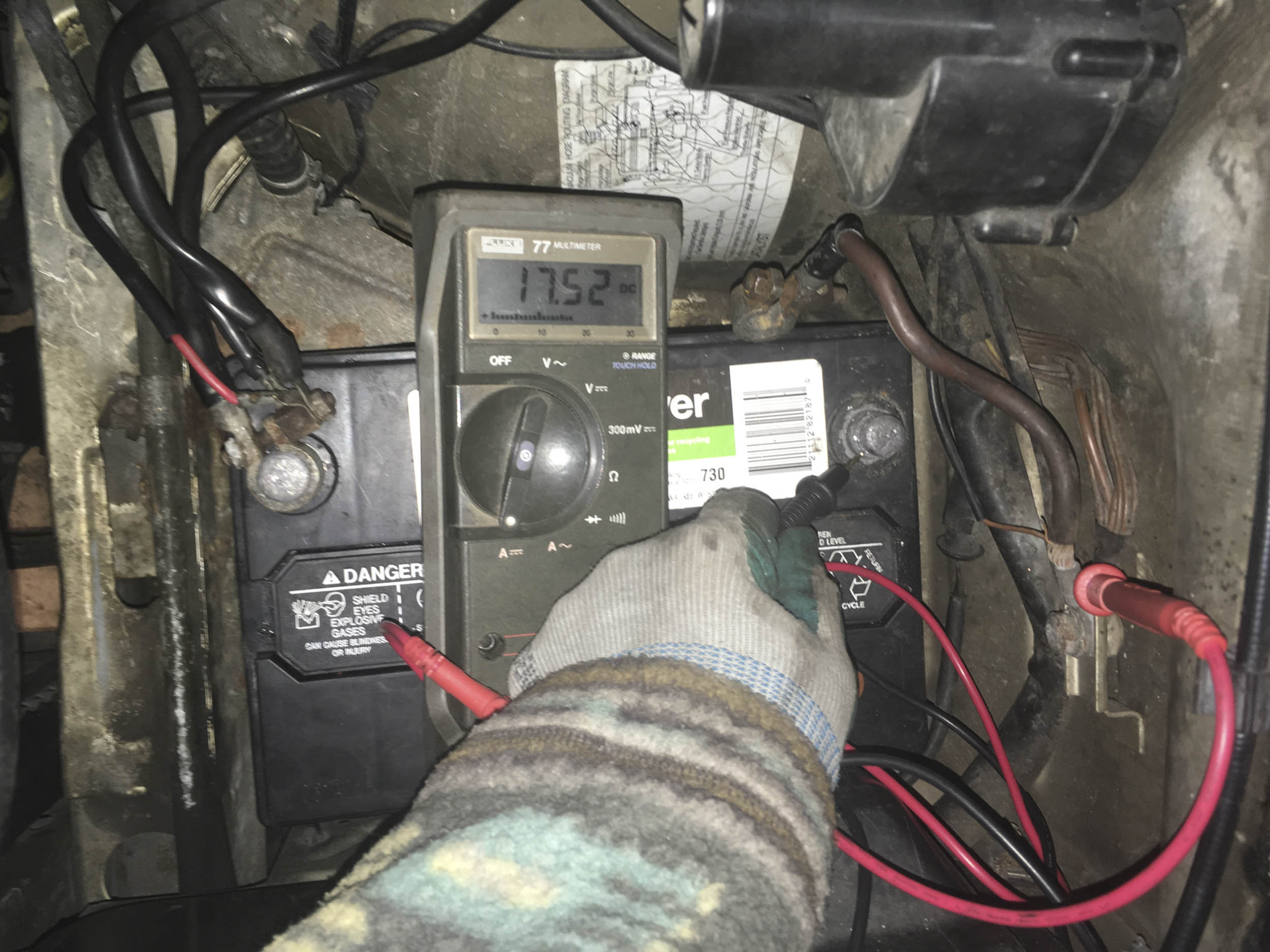7 battery basics to keep you charged up this winter
Winter is now upon us. Your vintage car is probably safely tucked away with its battery connected to a trickle charger, but the battery in your daily driver is now subject to stresses it doesn’t have in summer. Here are a few of my tips for winter battery survival.
#1: Don’t confuse a dying battery with a charging system problem or a “parasitic drain.”
They’re three different problems requiring three different solutions. A dying battery is a battery that, even when properly charged by the car’s alternator or a battery charger, is nearing the end of its useful life and can’t deliver enough amperage to the starter motor to spin the engine, particularly when stressed by cold temperatures. However, to properly diagnose it, you need to rule out the other two problems, because the charge in an otherwise healthy battery can be drawn down by either a malfunctioning alternator or by a so-called “parasitic drain” (an electrical device in the car that stays on even when the car is off). Here are the two tests you need to perform:
- Charging Test: Take a multimeter and set it to measure voltage. With the engine off, put the probes across the positive and negative battery terminals. It should read about 12.6 volts. Then start the engine and measure the voltage again. If the car won’t start because the battery is weak or dead, jump start the car. With the engine running, the voltage should increase to roughly 13.5 volts to 14.2 volts. If the voltage doesn’t increase at all with the engine running, the alternator isn’t charging the battery. This could be a problem in the alternator, the voltage regulator, or the wiring, or it could be corrosion on the battery terminals, but it must be diagnosed and fixed, because if it’s not, the battery will run down again in short order.

- Parasitic Drain Test: If there’s a parasitic drain that causes the battery to run down when the car isn’t driven for a few days, you’re probably already aware of it, but there’s a way to measure how bad the drain is. Make sure all systems in the car are off—lights, radio, phone charger, everything. Then take a multimeter and set it to measure amperage. Unhook the negative battery terminal, and connect the red probe to the body of the car, and the black probe to the negative terminal. In a late-model car, you’ll need to close all the doors and leave the car undisturbed for as long as 45 minutes so all of the control modules can enter their sleep state. Then look at the amperage on the multimeter. The number 50 milliamps (0.05 amps) is often bandied about as the upper threshold of acceptability, but I prefer to look at it with a few shades of gray. Less than 20 mA is a fairly small drain; 20–100 mA is more than you’d like to see (although completely manageable either by frequently driving the car or using a trickle charger). As you get up into hundreds of milliamps, something is clearly wrong that needs to be diagnosed and fixed.

The take-away from these two tests is this: If your car passes both the charging system test and the parasitic drain test, and if the car starts with a jump-start (see the caveat below) but without a jump, the battery is still too weak to start the car, odds are that the battery is dying.
#2: In cold weather, a jump start may not be enough.
Earlier I said, “If it starts with a jump start…,” but be aware that the combination of cold weather, corroded battery terminals creating high resistance, and cheap jumper cables not making good connection can keep the car from firing up with a jump start. Sometimes, in order to get a car to start in very cold weather, you need to pull the dead battery out, clean the cable clamps, drop a new or a freshly-charged battery in, and tighten everything up. This problem is often worse on cars with bigger engines and trunk-mounted batteries due to the extra battery cable length and the higher amperage needed to spin the engine.
#3: Clean the battery terminals.
If you see a mound of visible corrosion on the battery terminals, by all means clean both the terminals and the cable clamps. Use one of those post-and-clamp brushes available at any auto parts store. Even if you don’t see anything, this cleaning is good practice. But FYI, my experience is that corrosion and the voltage drop it creates are far more likely to be a problem on a vintage car than on a modern daily driver.

#4: If the battery is dying, replace it.
This may seem like obvious advice, but folks are often hesitant to replace a battery that looks new and clean. You can try recharging the battery with a good three-stage charger, but the rule of thumb of four years for battery life isn’t a bad one, particularly in climates with cold winters. Sure, sometimes batteries can last longer. But if the battery is four years old and in cold weather sounds like it’s cranking the engine slower and slower but starts fine if you jump it, then replace the battery before it strands you.
With the number of cars I have and batteries they need, I own one of those $70 Cen-Tech battery analyzers that Harbor Freight sells. It’s very good at telling you battery health. But the advice for most people is that if it seems like the battery is dying, it probably is.
#5: Replace the battery with something about as strong that fits the car and your budget.
Cars, for the most part, particularly older ones, don’t really care much what battery is in them. Just about any battery with roughly the same number of cold cranking amps (CCA) as the original will start the car just fine. What? You don’t believe me? Then what the heck do you think is going on when you jump-start a car? Obviously there are limits—don’t expect a garden tractor battery to start a truck with a 7.3-liter PowerStroke diesel—but other than comical extremes, it really doesn’t matter that much.
It is, however, important that the battery fits the car correctly. There are three components to fitting.
- The battery has to fit electrically, by which I mean the cables need to reach it and mate to the battery posts. Unless you have a vintage Japanese car with narrow “pencil posts,” most batteries either have top-mounted standard SAE posts or screw-in side terminals. There’s also the question of the orientation and polarity of the posts—whether the post at upper left is negative or positive.
- The battery has to physically fit in the space designed for it. Typically, the space is sized for a battery of a certain width, with some accommodation for differences in length and height. However, on certain cars such as my BMW 2002tii and my wife’s 2013 Honda Fit, space is so tight that they will accept only a specific size.

- The battery needs to be secured. This may be achieved with a clamp that holds down the top of the battery. However, on many cars, the battery is secured by having a small ledge on one side of the bottom of the battery slide under a lip in the car’s battery tray, and having the ledge on the other side of the battery held down by a small bracket.

The above issues—the post type and orientation, battery dimensions, and securing ledges—are largely standardized in what’s called the battery group number. There are many online tables listing the dimensions of the various group numbers; an example is here. For the most part, if your car takes, for example, a Group 48 battery, any Group 48 battery should fit correctly, but proper securing should always be verified
Some folks swear by certain battery brands, but there are only a handful of domestic manufacturers of flooded plate batteries, so you may have allegiance to what’s little more than a label. If you haven’t looked lately, batteries ain’t cheap; expect to pay $120–$150 if you walk into an Autozone. With the number of cars I own, I’m very price-conscious, so wherever possible, I use Interstate’s “blem” (blemished) and Walmart’s ValuePower batteries. They’re both only about $60. In addition, my Costco membership gets me regular Interstate batteries for about $100, provided they have my size in stock at the store. And there’s the rub: they typically only stock common sizes.
#6: There are exceptions.
Exceptions to the “any battery that fits will work” rule pertain mainly to newer cars.
- At some point in the mid-2000s, some manufacturers became persnickety about batteries. BMW, for example, instituted a “battery registration” procedure in which, when the battery is replaced, you’re supposed to take the car to a dealer and have it connected to a service computer that alerts the car to the presence of a new battery and adjusts the alternator’s charging profile accordingly. You can read up on user’s forums on the differing opinions on whether this has value or is little more than a way to force you to pay the dealer to replace the battery.
- If a newer car comes from the factory with an Absorbed Glass Matt (AGM) battery, it’s advised that you replace it with another AGM battery.
- If the battery is in the trunk or under the seat, it’s important that it be vented properly, so any replacement battery must either have the vent in the same place as the original, or include a vent kit to adapt it.
#7: Carry a battery jump pack.
Amazon and other retailers sell a variety of brick-sized lithium-powered battery jump packs for $40–$100, depending on capacity and features. These let you jump start a car without needing another car. They also typically have USB ports to charge your phone. I’m of two minds about them. On the one hand, if a battery suddenly goes over the edge to non-functionality, a jump pack can definitely save your bacon—or your spouse’s, or your child’s. But if you know that the car’s battery is weak, it’s better to replace it before it dies altogether. And if the battery has run down because the alternator has died, the jump pack isn’t really going to help you, because shortly after you disconnect it, the car will die.

Lastly, a word about AGM batteries. The best known of these are the Optima spiral-wound batteries that resemble a six pack, but there are other more conventional-looking ones. AGM batteries are more vibration resistant than traditional flooded plate batteries, hold their charge longer, and are sealed so they won’t leak acid and corrode the battery tray. But they’re expensive and available in fewer sizes. They may require a small platform adapter to properly secure them. I’ve always had more pressing needs for my parts money.
Until next time, stay warm and charged!
***
Rob Siegel has been writing the column The Hack Mechanic™ for BMW CCA Roundel magazine for 30 years. His most recent book, Just Needs a Recharge: The Hack Mechanic™ Guide to Vintage Air Conditioning, is available on Amazon (as are his previous books). You can also order personally inscribed copies here.


